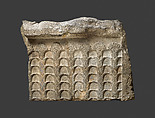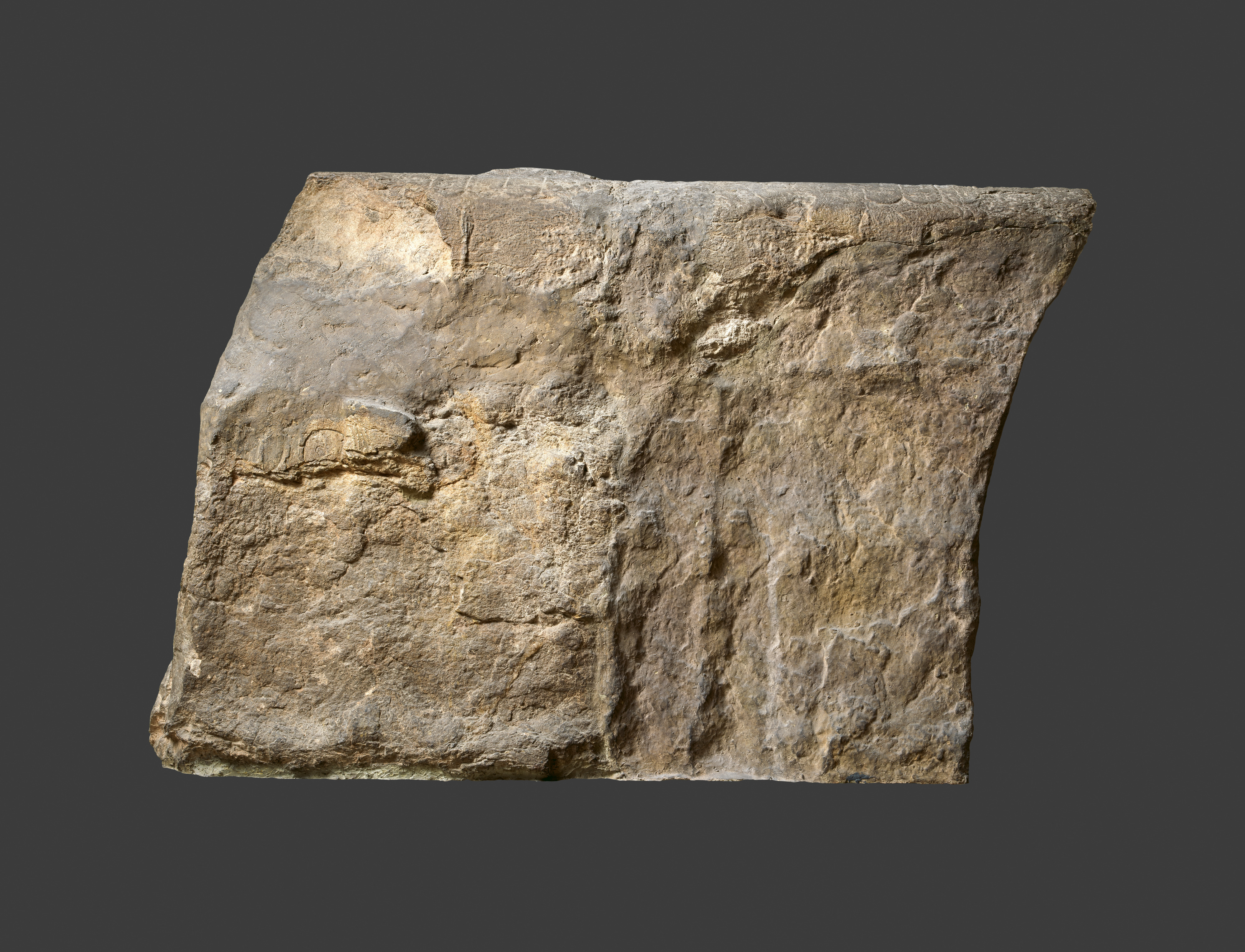Part of parapet
Not on view
This fragmentary piece of a parapet was originally from a monumental stairway. The decoration carved in relief depicts, on one side, conventionalized palmette trees and a projecting frieze of rosettes. The other side is very worn with traces of images of soldiers with spears and a geometric pattern at the top. Although this architectural decoration was found in the Western Area at Qasr-i Abu Nasr in 1931, it was originally made for and used at the site of Persepolis, before being brought to Qasr-i Abu Nasr and reused.
The small town and fortress of Qasr-i Abu Nasr is located near Shiraz in southern Iran, at a strategic point at the intersection of defensive mountains, available water sources, and along roads entering the Shiraz plain. The site was excavated by archaeologists from The Metropolitan Museum of Art for three seasons from 1932-1935. The town was occupied, at least intermittently, from the Parthian period (3rd century B.C.–3rd century A.D.) to the Muzaffarid period (13th-14th century AD). The major occupation, including the extensive fortress, dates to the Late Sasanian period (6th-7th century A.D.).
The Western Area is a small part of the town of Qasr-i Abu Nasr that was excavated in 1934. Over the course of several centuries the Western Area was constantly rebuilt. Large buildings, including an octagonal building and a columned hall that may have been a Nestorian church were uncovered by the excavations.
Due to rights restrictions, this image cannot be enlarged, viewed at full screen, or downloaded.
This artwork is meant to be viewed from right to left. Scroll left to view more.



